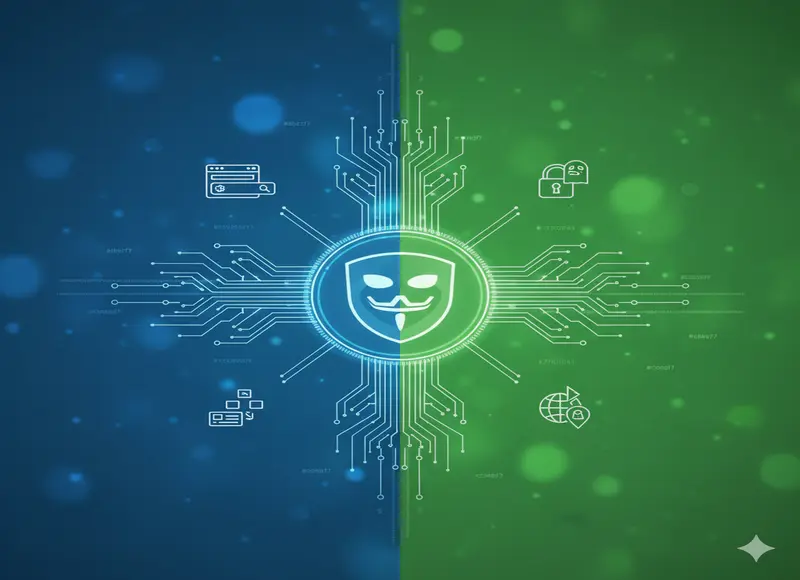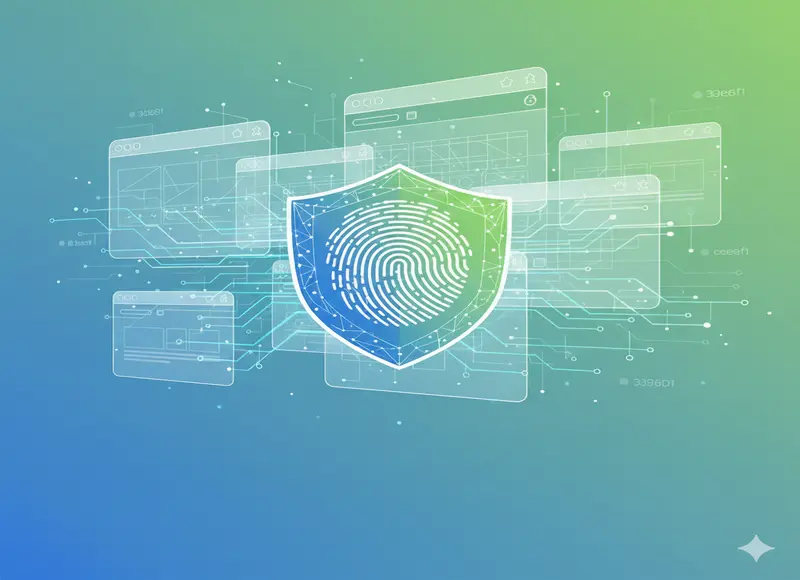Table of Contents
Check out our ultimate guide for fintech app development to build a successful mobile banking app that meets the expectations of your clients in the most appropriate manner.

The global payments industry is witnessing an upsurge in the number of mobile banking solutions. As per Statista, the total revenue in the digital payment segment will grow at 4,934,741 million (approx.) in 2020. You need to integrate efficient digital fintech solutions into your business to get the advantage of this growth.
Developing an excellent mobile banking solution allows you to stand apart in the global FinTech market. It will also help you to give an easy, convenient, and efficient banking experience to your customers. You can hire remote Fintech developers or extend a dedicated software development team to develop a Fintech app for your business.
Why is the mobile banking app becoming so popular?
The modern customer always prefers online banking rather than visiting a traditional bank. Therefore, it is better if you provide them with better banking options through user-friendly and robust mobile banking software to facilitate them effectively.
Here are a few reasons why customers are switching over to mobile banking apps:
- Increases financial inclusion
As per the world bank, 1.7 billion (approx.) of the world is unbanked. One of the reasons for this is poverty due to which many people are unable to access banking services. Mobile banking solutions can increase financial inclusion by offering multiple banking services like account opening, loans, fixed deposits, money transfers, etc., to this unbanked population with great convenience.
- Easy to connect with your audience
While making a mobile banking solution, you must have to understand the needs of your customers. That is why you need to connect with your audience.
Millennials are the prime users of a mobile banking app, they will use it for paying for their daily needs. You can harness this opportunity by offering them with seamless mobile banking solutions.
- Payment and transaction security
You can implement multiple measures, such as blockchain, encryption, biometric and two-factor authentication, data protection, etc., to enhance the security of your customer’s payments. For added protection in specific financial documents, using a bank statement password pdf ensures that sensitive information remains secure and accessible only to authorized users. You can also choose a secure data storage medium for securing your payments.
Also, you can integrate multi-factor authentication into your mobile banking solution. You can offer your users with some guide or instruction module to educate them about the security of their payments.
- 24*7 availability
With this fintech app, customers get access to banking services twenty hours and seven days of the week. They can easily access their banking services from anywhere in the world.
Mobile bank apps have changed the traditional way of banking. Now, the customers do not need to stand in long lines to deposit their money. They also do not need to follow the complicated banking procedures for doing transactions.
- Speedy transactions
With an efficient mobile banking app, customers can easily do any transaction within a few taps on their smartphones. This high speed of doing transactions is a prime reason for the increasing popularity of digital FinTech solutions.
- Cost-effectiveness
Digital FinTech solutions can increase the cost-effectiveness of FinTech businesses by lowering their operational costs.
Digital FinTech solutions are also very helpful to banks. By using mobile financial software, banks do not have to build or maintain as many physical branches if more customers carry out banking via their mobile phones.
- Process-oriented
Mobile banking solutions are highly process-oriented. Integrating an advanced core banking structure enables a seamless, omnichannel customer experience. It uses a single framework with a multi-payment approach. It also deploys cloud computing for storing the sensitive payment information of customers. It uses SLAs and proprietary middleware. With the incorporation of cloud computing, these solutions securely store customers' sensitive payment information, ensuring data privacy during banking cloud migration processes.
What are the most important features of a mobile banking app?
Building a successful mobile banking app is not an easy task and when it comes to FinTech app development, things get a little more tricky. When you are building a mobile banking app, ensure that it should be a trusted platform over which people can easily carry out their transactions.
Let us see some very important mobile banking app features to be considered by Fintech app developer :
You can integrate a sign-up and sign-in feature where your users can do their registration by entering their email-id or phone number.
Once your customer enters the required information, you need to send them an OTP or a verification link for secure registration. Then the user can easily access the mobile banking facilities by entering his login credentials and password. You can also add a captcha for further security.
Also, you can give a short tutorial of app operations to your customer for a better understanding of your mobile banking solution. Once the customer gets used to your mobile banking app, you can pitch them various offers. You can also ask them to share feedback for improving your app’s quality.
- Digital Passbook
Nowadays, customers can easily access their bank passbook over their smartphones with a mobile banking app.
All the transactions of customers are displayed in their digital passbook. From there, users can easily know their credit and debit amounts. Users can also generate a statement of their banking transactions for any period.
Financial management tools can also be integrated into the mobile banking solution. Financial and taxation tips can also be offered in the application.
- Integration of additional payment features
You can use additional payment modes like RTGS and NEFT with which your users can pay their electricity bills, do their mobile recharge, book train tickets, movie tickets, and many more.
Apart from that you can also make payment for different insurance premiums, operate your Demat account for sharing trading, etc.
- Push notifications
The push notification feature allows you to send credit or debit alerts to your users.
It also helps you to raise awareness among your users about fake calls regarding lottery prize, spam, and phishing.
You can also inform your customers about your new schemes and offer push notifications.
- Promo codes and cashback
Promo codes and cashback are a fantastic way to attract new customers and retain the existing ones. These offers can increase your sales if you can craft them smartly.
You can integrate these lucrative loyalty programs into your app users to increase repeat purchases as it lets the customers buy more than they would have planned initially.
- Geolocation facility
With the geolocation feature, banks can offer information about nearby banks and ATMs. You can achieve some great results if you add some unique features of geolocation in your app. You can also demonstrate this feature to your users with its informational video.
- Loan Management
Gone are the days when loan application was a daunting task. With digital FinTech app solutions, the loan application process can be completed in a few steps. FinTech businesses can easily manage their daily loan dealings with a mobile banking app.
You can allocate emergency funds to your user with a mobile banking app. A mobile banking app offers a time-saving and fast-paced solution to your users. Users can track the status of their loans at any time and place. It reduces your operational costs by optimizing the conversion funnel.
- Faster payment processing
With a mobile banking app, you can allow your customers to do their transactions in just a few taps over their phones. It is relatively much easier and faster than the traditional banking system.
So, you need to remember that merely providing the online services will not suffice your profitability, but it’s time to consider creating a banking app.
- Bill payments
The bill-payment feature is an important part of any mobile banking solution. Paying bills with a cheque is time-consuming, inconvenient, costly, and environmentally unfriendly. It’s also not a secure payment instrument either. Cheques can get lost or stolen in the mail system. Sometimes they can be also misplaced by recipients.
You can also give timely payment reminders to the users of your app. One time payment feature can also get integrated into a mobile banking app.
Accounts of the customers are linked with the app, so the payment process will get faster.
- Peer to peer transaction
Peer-to-Peer payments or P2P transactions allows your user to send money directly to anyone’s bank account.
It will also help you to build a great consumer base by improving your customer experience for interntional transaction. Optimising the application for cross border trnasaction offering P2P payments, you can build trust and loyalty among global users. For instance if the USA based user wants to send money to nepal, offering P2P payments will greatly enhance the convenience and reach of your payment solutions.
Peer to peer payments reduces the customer’s reliance on traditional banks as they can easily make payments at any time and anywhere.
- Fund transfer
Customers can transfer their funds using multiple payment methods like NEFT, RTGS, and IMPS, etc.
These are some important features that separate mobile banking from that of internet banking.
In this way, a mobile banking app efficiently supports fund transfer.
Stages of Mobile Banking App Development:
There is a step-by-step process of building a successful mobile banking application for the designated FinTech company:
- Research & Planning
This is the 1st step to create a successful fintech app, Start conducting research and planning carefully for the look and features of the app also validate the idea based on availability. In brief, this phase is all about collecting the ideas from clients and making the project details more comprehensible.
Usually, this stage lasts from two to six weeks and may cost $5,000–$25,000.
- Team formation for the project
You almost certainly need a mixture of strategist, designers, developers, Project manager, QA & Testing team each with a different set of skills and abilities either in-house or outsourced to develop the application.
- UI/UX Design
The look or design of the app is very important for the users. The good design with vibrant colors and easy-to-use features attract customers the most and as a fintech app development company you should always focus on the UI/UX Design of the application. In this stage, the App designer will develop UI wireframing, UX design, and mockups before the commencement of coding.
This stage might take two weeks and more, and the average cost is about $5,000. However, the price always depends on the number of screens in the app, so the expenses may vary.
- Development
The next task is to put life into the app design. Mobile App developers will perform the development process in two stages, one is front-end and another one is back-end development.
Frontend development: the UI will be converted into functioning code.
Backend development: server-side configuration, data integration and security will be covered in this stage.
On average, the development stage lasts for four to five weeks for the simple app. A more complex app may require five to six months. The price of the development varies greatly depending on the frameworks and the tools are being used and may reach $100,000.
- Quality Assurance & Testing
It is a very crucial step before launching the application in the market officially. To avoid the bugs and errors, the app should be tested in different ways and platforms to ensure the quality and make sure that all the components are working in harmony.
The testing step may take four to five weeks and costs around $5,000–$10,000.
- Marketing and Deployment
At this stage, active marketing, and advertising through various mediums like social media, blogging, press releases, search advertising, and email circulation takes place to attract as many users as possible and get necessary feedback.
Staying updated with how tech-driven businesses promote their solutions is essential in a fast-moving digital market. Platforms like The Tech Leaders regularly highlight successful strategies used by fintech companies to grow user bases and build lasting engagement. Learning from these examples can offer valuable direction for your own app launch.
The cost of this stage is difficult to predict, however marketing should be considered as a compulsory element in your budget.
- Maintenance and Support
For the successful performance of your fintech app, further maintenance and updating features must be covered development.
Summing Up
Fintech applications have taken the FinTech world by storm. Creating a cost-efficient mobile banking app by using react-native technology has encouraged many FinTech businesses to develop a mobile banking app for their business. With digital Fintech solutions, customers will have a better experience and feasibility in conducting their financial transactions.
If you are looking to create a profitable mobile banking solution for your business, you should better consider all the points discussed in this article. Keep reading this space for more such insights.
Author Bio:
Nikunj Gundaniya, Product manager Digipay.guru, one of the leading eWallet App Development, which provides mobile finance application development services. He is a visionary leader whose flamboyant management style has given profitable results for the company. He believes in the mantra of giving 100% to his work.









